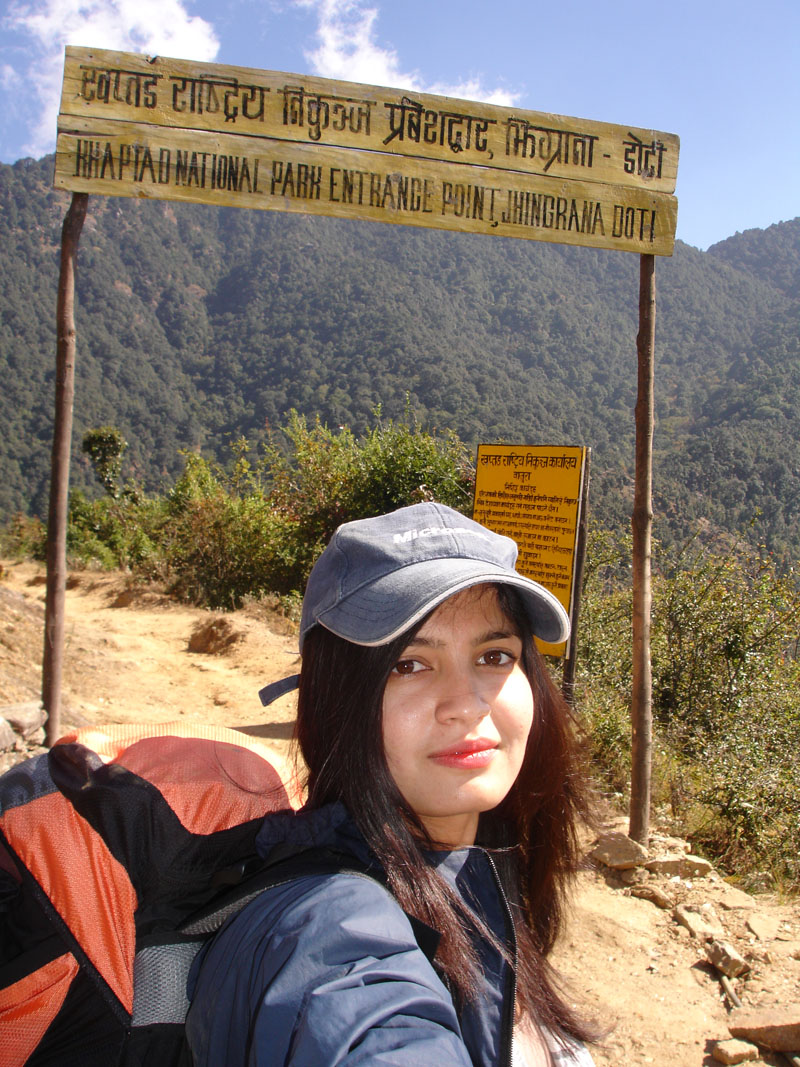Peaceful scenic Khaptad
Sagarika Bhatta shares her solo travel experience to Mystical Khaptad National Park
Khaptad lies on an elevated plateau that consists of grasslands or meadows between sub-alpine landscapes. Khaptad National Park is located in the far western region of Nepal and spread over four districts — Doti, Bajhang, Bajura and Acham. In fact, the boundaries of the four districts meet at a point in Khaptad. It covers 225 sq km with highest point at 3212 m.
My journey was to start around the first week of May 2015 after I won the first “Why I travel challenge?” competition organised and funded by Sherpa Shah but had to postpone it due to the earthquake. This challenge is held to encourage women to travel solo. This is a yearly challenge and I was delighted to be the first to commence this journey. I finally started off to Khaptad in November, 2015.
I packed my bags with all necessary items for trekking and left Kathmandu. It was a long 30 to 32 hour journey from Kathmandu to Silgadhi from where the trek started. I had never travelled continuously for more than 12 hours. The bus passed through many highlights of western Nepal such as Bardiya National Park, Chisapani Bridge over Karnali, Ghoda Ghodi Tal although I would miss them if I were travelling at night. Around 12 pm next day, the bus left me at Atarya, Kailali. Amidst the fuel crisis, luckily, I found a bus to Silgadhi. I reached Silgadhi around 10 pm. The bus ride was one of the harder parts of the trip, I must say.
My trek from Silgadhi to Jhigrana was quite a long one. When I reached Baghlekh I changed my mind about spending the night there due to unavailability of hotel. After two more hours of non-stop walk to Jhigrana, I finally found good food and a shelter to spend the night in. The owners of Khaptad Sandesh hotel and lodge were really welcoming and warm.
The next day, I continued my journey to Bichpani, from where I entered Khaptad National Park. I was informed that the route to Bichpani would be a tough, high and steep trek between the jungle. My bag filled to the brim with water and food, it took me almost seven hours to reach Bichpani. Upon arriving I was welcomed by the freezing cold!
The following morning I started from Bichpani to Khaptad patan. The path was meandering in between jungles and was covered in yellow autumn leaves. A little ahead into the jungle, it started to snow in a slight dreamy way. Snowflakes touched the ground in swirls and I stood
mesmerised. After six hours of walking, I finally entered Khaptad patan. Khaptad is known for its green meadows, grasslands and pastures. It is said that there are altogether 22 large pastures within the Khaptad National Park.
The jewel of Khaptad is, of course, the open green meadows spread over gentle terrain cut by small streams in evergreen alpine forests. The jungles of Khaptad are rich in medicinal herbs. The landscape is the stuff postcards are made of and Khaptad offers you the chance to experience it yourself. During spring and autumn the fields are said to be covered with colourful flowers although I wasn’t lucky enough to see this.
I stayed in Khaptad for three more days. I went to visit the religious sites — Triveni, Kedardunga, Khaptad Daha, a tower from where you can see Saipal Mountain range, maithan, and Khaptad Baba ashram which is where the Khaptad baba stayed for most of his life. It is now an open museum. You can see his room and books and instruments that he used in his lifetime. He moved in the area in 1940’s to meditate and worship.
Vegetation of the region includes chir pine-rhododendron forest, oak forest and Himalayan fir-hemlock-oak forest and alder forest in reverie areas. Mammal species symbolic of the park are leopard, Himalayan black bear, wild dog and musk deer. Bird species symbolic of the park include the implying pheasant, Peregrine falcon, and vulture.
It has always been easy for me to travel uphill but downhill is a difficult task. While returning from Khaptan patan, it was hard to walk down the steep hills, I slipped often and injured my leg. The return journey to Silgadhi was a tough one for me. From Silgadhi I took a jeep to Dipayal. Then I hitchhiked on a truck to Dhadeldura from where I took a bus to Atarya and then to Kathmandu.
The journey was tough and challenging but it was worth the trouble. Travelling solo could be daunting at times; walking alone through thick jungles or with strange men. But a traveller’s soul cannot stay in one place and I am willing to travel solo again and go through all the hardships again just to be able to relive those experiences all over again.





